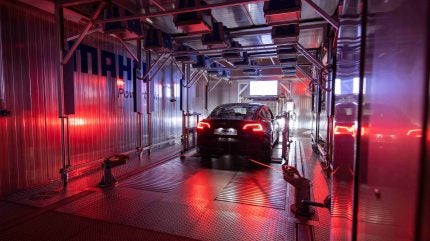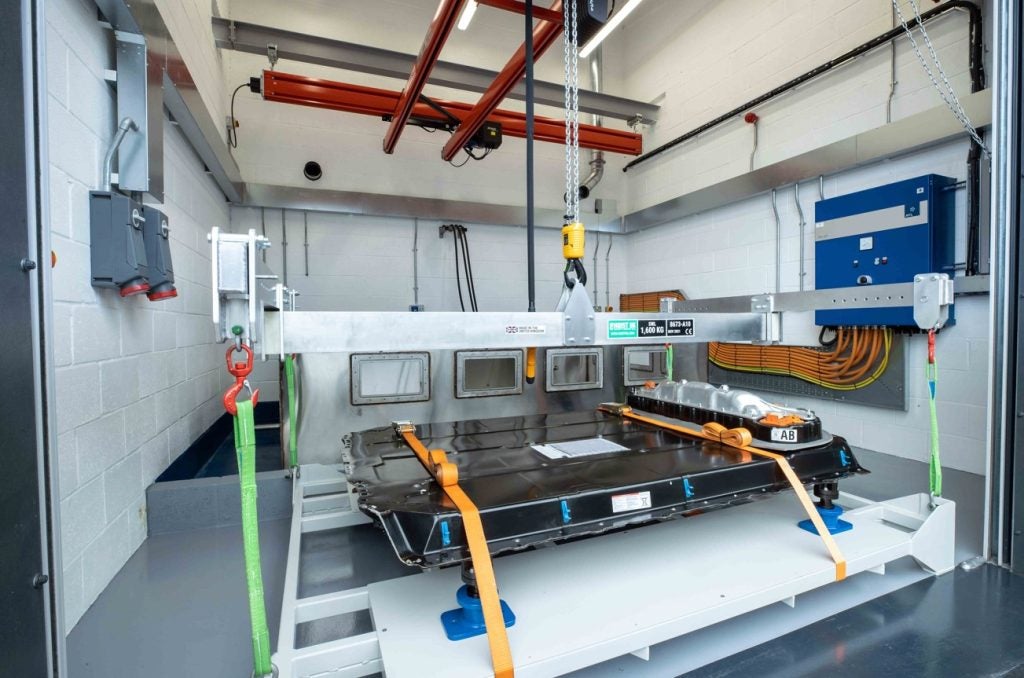
To assist OEMs in the competitive automotive space, MAHLE Powertrain has lately been on an electric and hydrogen journey, reimagining their research, testing and development protocols. At their UK site based in Northampton, the company can put EV cells to the test in altitude chambers and specialised areas where batteries can be stress tested.
Surprisingly, the company says it has also experienced a spike in demand for their original ICE expertise which focuses around developing and homologating high-performance ICE and hybrid engines for niche and supercar manufacturers.

Discover B2B Marketing That Performs
Combine business intelligence and editorial excellence to reach engaged professionals across 36 leading media platforms.
We spoke to Simon Reader, engineering director, MAHLE Powertrain, to learn more about the company’s shifting journey, and to touch on hyper-car production and ICE demand.

Just Auto (JA): Can you provide some background on the company?
Simon Reader (SR): MAHLE Powertrain is part of the global MAHLE group who supplies components to automotive OEMs. We’re in most of the cars on the market.
Specifically, we’re the engineering consultancy part of MAHLE group. We don’t deliver any components – although we might design and make some parts as prototypes as part of a project.
We’re basically delivering services to our customers and consultancy on automotive topics.
Our original business was high performance engines. Over time, we’ve had to develop that a little bit more into more general powertrain, and then also think about what space we are going to take in the new battery electric world.
About 15 years ago, we said we can do high performance and high efficiency engines (as efficiency was becoming more of an important topic) and couple that with some degree of electrification; then we could look more closely at hybrid solutions. That was a very nice fit for us, working in that hybrid space and looking at series and parallel hybrids.
Whether it was charging directly to the wheels, or through the use of range extender engines charging the onboard battery, we looked at different set-ups. We also worked on projects for ourselves where we built ourselves different types of hybrid and electric solutions. It enabled us to start our journey into electrification, and since then, we’ve transitioned partially into that.
Why did the company decide on battery rather than electric motors?
We’re a global company, things are happening around the world, just at different pace. The UK and Europe obviously has a clear direction. China’s is perhaps a little bit slower, and the US is probably slower than that. We have to look at what we can do and keep in touch with all those customers, wherever they be, globally.
Part of the journey for that was to get ourselves fully up to spec and up to speed with batteries. To do that, we chose batteries rather than electric motors. We felt that electric motors would be covered by the Tier 1 companies, but batteries were the things that were going to need the largest amount of development work and expertise. So we thought, let’s focus on that and help our customers.
We now have the ability to design and develop batteries alongside being able to build those as prototypes. The latest investment we made was a test facility so that we can test cells, modules and full packs. So the whole pack that would go in your car, we can test that now. That’s the journey that we’re on, but without losing touch with the internal combustion engine – we want to keep in touch with that as well.

Why do you think there has been an increase in demand for ICE vehicle testing?
The recent influx of projects and excitement around internal combustion engines tends to be a little bit about the high-performance end of this. We call it the ’last hurrah’ for the internal combustion engine. We are talking about the companies and brands that have historically been in very high-performance sports cars, niche products. They’re still very much looking to take that right to the end of the road. Right to the point when somebody says: “I’m really sorry, but you can’t register this car on the road anymore.”
There’s going to be a point when ICE hyper-cars will be banned. I guess there’s a little bit of a softening of the rules for those sorts of cars on a low-volume or niche application basis because they’re typically well under 1,000 units. We’re maybe talking about 50 units of a car or 100 units. It means they can push it longer, but ultimately, that will still have to end.
It’s going to shrink and even those people are looking at hybridisation; the ones that we’re working on at the moment are not pure ICE. They’ve still got a hybrid element to them and most of those are a high voltage hybrid element.
I think what will happen is that hybridisation will creep up. Bentley is as a good example. The W12 is now gone, and V8 plug-in hybrid is their direction. The demographic, the buyer of these types of hyper-cars is slightly different from mainstream. They want lots of cylinders, they want lots of turbochargers, they want lots of performance, 1,000 horsepower is a kind of baseline. We’ll see a few of these come around, but then I think that will have to die away, unfortunately.
They don’t have the issues with fleet average – which the high volume OEMs have to deal with and get penalised if they don’t meet targets.
We are currently working with Zenvo on a V12 with a Lambda 1 engine. That still means that it runs as efficiently as it possibly can with perfect air fuel ratio across the full map of the engine. You have a V12, so you could argue its CO2 is going to be higher, but then you have just 100 units of them, and we’re bringing the engines into the latest efficiency standards. We’re having to bring technology into them that we’ve developed internally to be able to get them to perform at optimised levels, bearing in mind the power and emissions requirements.
How does the EV space and journey differ between OEMs?
I think the everyday companies are all on their journey through hybrids and into electrification. I think the other thing that we’ve seen in the more mainstream OEMs is a slight slowing of the complete transition to BEV and using hybridisation as more of a stepping stone towards that, which is what we originally assumed would happen.
Different OEMs took different routes. Toyota, for example, was always along the lines of seeing hybrids as the absolute starting point on their electrification journey. But then you have the announcement by somebody like Jaguar that the brand is going to be all electric by 2025. So you’ve got different routes, timescales and priorities. Market geography is also a factor.
We always expected hybridisation would be the stepping stone to fully electric, but I think people, when they saw the ban [pure ICE on light vehicles for sale] come in decided that they needed to make that step a little bit quicker. That’s given us all a challenge in the industry to think: where do we invest our money for the future? What skills do we need?
I think it’s also fair to mention that hyper-car manufacturers and niche volume OEMs are responding directly to their customer demand, also. Their customers want a car with an engine that has all the character, the noise, and the sense of adventure they value. They don’t want EVs, even though performance is available with EVs.
There are also concerns that EVs may be reducing in value and depreciating whereas cars with high performance engines, or bought as an investment, are potentially going to increase in value in future.
What do you see the future holding for EVs and hybrid vehicles?
As a business, previous legislation for petrol and diesel drove us to make those vehicles more efficient and cleaner. Every time we had a new piece of legislation come out, the road map for us was quite clear. We’re not really invested in the diesel side of the business – we’re much more in the gasoline/petrol high performance, and then we link that up with the hybridisation. That was the direction we chose to go.
One of our biggest challenges now is not knowing which direction our customers are going to go, and having to invest in all of the options. So that means keeping up to date with ICE, having battery facilities. Now we must also invest in understanding hydrogen as well.
From a business perspective, it’s a need to cover all the bases, and that may mean for us that we need to diversify a little bit. We were quite focused, and that allowed us to spend our money wisely on capital expenditure, on facilities. It allowed us to invest in the skills also, and the people required down a particular technology route. Now we must change that and widen that out.
From a personal standpoint, I think there’ll still be a huge mix on the road in five years’ time. I think that at the moment, we’ve seen this stalling of EV sales. That will probably switch, and EV sales will have to accelerate. The manufacturers are going to have to come up with a way of getting those to be affordable vehicles that people can buy and they’re going to have to ramp-up production because legislation and regulations are pushing them down that route.
We had a lot of early adopters, people who decided they wanted to take on electric cars, were willing to deal with some of the shortcomings of charging network issues. It is getting better, but that infrastructure needs to keep accelerating in terms of availability.
I think the response from the OEMs will basically be that those vehicles will become cheaper and they will have to push them onto the market.






